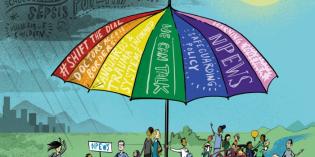About
In 2012 over 3,000 babies died before age one, and over 2,000 children and young people died between the ages of one and nineteen.
Over half of deaths in childhood occur during the first year of a child’s life, and are strongly influenced by pre-term delivery and low birth weight. Risk factors include maternal age, smoking and disadvantaged circumstances.
Suicide remains a leading cause of death in young people in the UK, and the number of deaths due to intentional injuries and self-harm have not declined in 30 years.
After the age of one, injury is the most frequent cause of death; over three quarters of deaths due to injury in the age bracket of 10-18 year olds are related to traffic incidents.

Background
Why Children Die: death in infants, children and young people in the UK has been written by independent experts - Ingrid Wolfe, Alison Macfarlane, Angela Donkin, Michael Marmot and Russell Viner. The report reviews existing UK evidence on child mortality.
Key messages
Infant, child and adolescent death rates in the UK have declined substantially and continue to fall. However, there are significant areas of concern:
- The overall UK childhood mortality rate is higher than in some other European countries.
- The key areas where the UK rates appear to be relatively high are infant deaths and deaths among children and young people who have chronic conditions.
- Injuries are the most frequent cause of death in children after their first year of life and although unintentional injuries are the most common, the failure to reduce intentional injury deaths among young people recently is also a pressing concern.
- Several reports have shown that health services do not always deliver optimal care for children and young people and lives may be lost as a result.
- There are marked social inequalities in death rates. Many of the causes and determinants of childhood deaths are preventable.

Calls to action
The UK could, in theory, achieve the same mortality rate as countries where children have a greater chance of surviving but how we might go about achieving this goal is less clear.
There is no single cause for the disparities between countries and equally there are no simple solutions. Health systems and policy research for children is at an early stage of development, and the problem of child mortality is highly complex.
However, we can start to make reasoned general policy and practice recommendations by careful definition of criteria for action:
- common causes of deaths or substantial contributors to the mortality burden
- diseases or conditions where significant deficiencies in care have been identified and for which there are identifiable and achievable solutions
- systems and organisation issues that seem to be important when comparing the UK with other European countries
- wider societal and policy issues that make a difference to the chances of children’s survival.
There are three levels through which we can work together to improve the health and lives of children and young people, and reduce their chances of death:
- Government and the role of civil society
- Health systems and organisations
- Healthcare and public health services.
We have developed bespoke recommendations for the policy and decision makers in England, Northern Ireland, Scotland and Wales. These recommendations cut across the three domains of government and civil society; health systems and organisations; and health care and public health.










